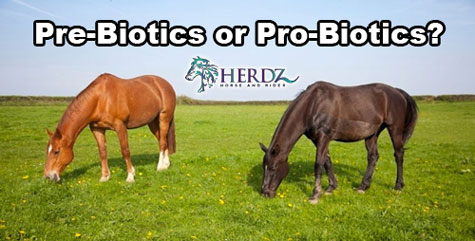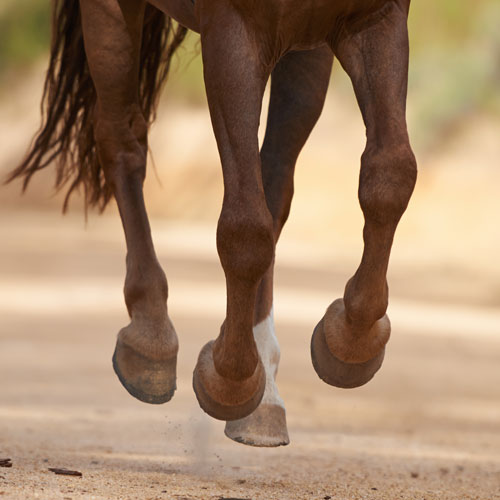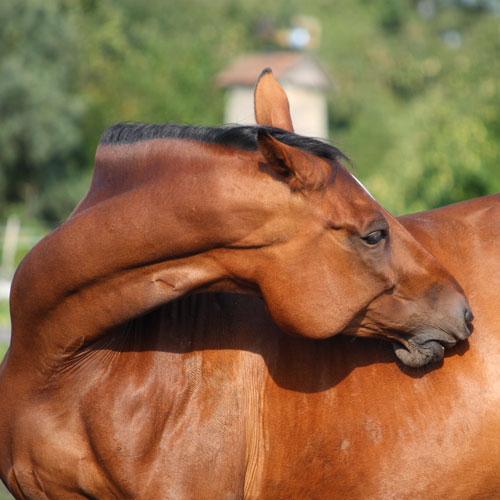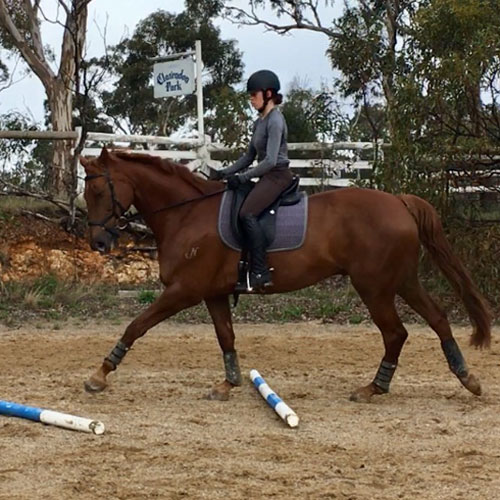Pre and Pro-Biotics for Horses

Pre and Pro Biotics for Horses
Coming into spring it is not uncommon for digestive upsets to occur. It is important to understanding the difference between Pre and Pro-biotics and how they work synergistically to help your horses and foals get the most out of their nutrition.
With the spring grasses comes the high-energy play and the unfortunately that can lead to accidents, vet bills and anti-biotics. While we all know and understand the benefits on antibiotics in treating infection, we often fail to make the connection between good and bad bacteria in the gut and that antibiotics kill “biotics” largely indiscriminately.
After a course of Anti-biotics, it is always a good idea to assist your horse’s digestive tract to come back into balance as fast as possible. We can do this through supplementing with Pre and Pro-biotics. (interestingly enough, after joint supplements, digestive aids are the most added supplement to the equine diet, which only makes sense when we reflect on how sensitive the equine digestive tract can be) In Australia we have a great pro-biotic product – Protexin that can be used across all mammals and birds.
So then comes the question, “What is the difference between Pre-biotics and pro-biotics?”
Pro-biotics are live “good” microorganisms, such as bacteria and yeast.
In horse supplements, common probiotics include Lactobacillus acidophilus, Lactobacillus plantarum, Lactobacillus rhamnosus, Bifidobacterium bifidum, Enterococcus faecium, Aspergillus oryzae, Candida pintolepesii, Lactobacillus delbrueckii subsp. bulgaricus & Streptococcus thermophilus. Millions to billions of colony-forming units (CFUs) are included per serving Protexin Animal Pro-biotics.
Pre-biotics are the foods that feed the pro-biotics. Examples of pre-biotics included in equine supplements include fructooligosaccharides (FOS), xylooligosaccharides (XOS), polydextrose, mannooligosaccharides (MOS), galactooligosaccharides (GOS), pectin, chickory and psyllium. Your horse does not digest these food ingredients. Instead, pre-biotics are digested by the “good” microorganisms or pro-biotics in the horse’s digestive system to increase their numbers or activity.
When pre-biotics and pro-biotics are supplemented together, they work synergistically (so this means 1+1 = 3).
The horses gut is a large fermentation chamber where they break down fibrous material such as grass and hay. Pro-biotics assist in the fermentation process that results in the production of volatile fatty acids that provide a significant energy source to the horse, produces B vitamins (such as biotin, which is needed for maintaining healthy hooves) and other nutrients essential to the horse’s overall health, and also assists in suppressing the “bad” microbes (such as Salmonella and Clostridium difficile) from overpopulating the intestines and causing diarrhea, malabsorption of nutrients and illness.
So, who should be getting Pre and Bro-biotics?
If you have horses of foals that are struggling to hold condition, have recently been on a course of anti-biotics, are traveled or exposed to stressful situations frequently, have loose manure or scours, are undergoing a change in diet, are nervous and flighty, are immuno compromised or often have a poor appetite, then have a look at the diet, add is some Pre-biotics like Psyllium husks and Some Pro-Biotics like Protexin and improve your horses comfort.





